|
|
|
Sort Order |
|
|
|
Items / Page
|
|
|
|
|
|
|
| Srl | Item |
| 1 |
ID:
060025
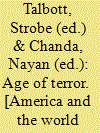

|
|
|
|
|
| Edition |
1st ed.
|
| Publication |
New York, Basic Books, 2001.
|
| Description |
xxiv, 232p.hbk
|
| Standard Number |
0465083560
|
|
|
|
|
|
|
|
|
|
|
|
Copies: C:1/I:0,R:0,Q:0
Circulation
| Accession# | Call# | Current Location | Status | Policy | Location |
| 049372 | 973.931/TAL 049372 | Main | On Shelf | General | |
|
|
|
|
| 2 |
ID:
137334
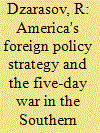

|
|
|
|
|
| Summary/Abstract |
CRIMEA WAS UNIFIED with Russia so fast that the U.S. intelligence community was caught unawares. According to the normally well-informed The Wall Street Journal, "the Obama administration is 'very nervous,' says a person close to the discussions. 'This is uncharted territory'."1 This was more than a one-time failure to predict what the Russian special services had been planning: it was a huge political flop of American strategy in Ukraine. Russia demonstrated that the degree of its readiness to stand opposed to any challenges of the West was unprecedented since the end of the Cold War, something what the United States did not expect.
|
|
|
|
|
|
|
|
|
|
|
|
|
|
|
|
| 3 |
ID:
143059
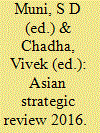

|
|
|
|
|
| Publication |
New Delhi, Pentagon Press, 2016.
|
| Description |
xiv, 380p.hbk
|
| Standard Number |
9788182748859
|
|
|
|
|
|
|
|
|
|
|
|
Copies: C:2/I:0,R:0,Q:0
Circulation
| Accession# | Call# | Current Location | Status | Policy | Location |
| 058437 | 355.005095/MUN 058437 | Main | On Shelf | General | |
| 058438 | 355.005095/MUN 058438 | Main | On Shelf | General | |
|
|
|
|
| 4 |
ID:
074363
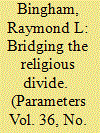

|
|
|
| 5 |
ID:
144326
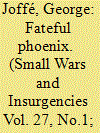

|
|
|
|
|
| Summary/Abstract |
Although the Islamic State in Iraq and al-Sham (ISIS) is seen as a novel manifestation of Islamic extremism, it is in fact the latest, albeit perhaps the most effective, of a long line of revivalist movements in the Islamic and the Arab worlds. Its motivations – hisba and jihad – differ little from its predecessors and its ambitions – to create a state organised in accordance with the precepts of the Islamic caliphate – reflect a long-standing Islamic ambition. It differs, of course, in terms of the sophistication of its political and military strategies, which mirror the contemporary complexities of the world in which it operates, but its objectives recall long-standing Islamic ideals, even if articulated in radically brutal and extremist ways. More importantly, perhaps, ISIS or Da’ish, to give it its Arabic sobriquet, reflects the enormous degree of resentment inside the Middle East at the ways in which Western powers have intervened in regional affairs over recent years, particularly their support for regimes and economic systems there that have betrayed, in the popular imaginary, the essential principles of social justice that lie at the root of Islamic vision of ideal social order. Indeed, in many respects, its analysis of the world in which it operates and of the objectives it seeks differ little in essence from those any other resistance and rejectionist movement, whether religious or sectarian. More specifically, it has been the sectarian conflict that resulted from the reversal of political order in Iraq as a result of the 2003 American-led invasion that has driven the success of the movement in capturing widespread Sunni support. Whether it can manage the complexities of the administration of a state remains open to question.
|
|
|
|
|
|
|
|
|
|
|
|
|
|
|
|
| 6 |
ID:
152207


|
|
|
| 7 |
ID:
172674
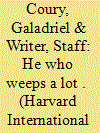

|
|
|
| 8 |
ID:
107421
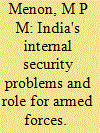

|
|
|
| 9 |
ID:
137839
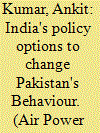

|
|
|
| 10 |
ID:
145162
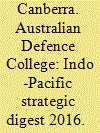

|
|
|
|
|
| Publication |
Canberra, CDSS, 2016.
|
| Description |
317p.pbk
|
|
|
|
|
|
|
|
|
|
|
|
Copies: C:1/I:0,R:1,Q:0
Circulation
| Accession# | Call# | Current Location | Status | Policy | Location |
| 058665 | 320.12091823/CAN 058665 | Main | On Shelf | Reference books | |
|
|
|
|
| 11 |
ID:
191003
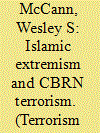

|
|
|
|
|
| Summary/Abstract |
The extant literature on the relationship between religious ideology and CBRN weapons pursuit lacks a strong empirical basis. To address this, the current study utilizes a new dataset—the CBRN Terrorism Database (CTD)—to evaluate whether Islamic actors are more or less likely to pursue CBRN weapons. Binary logistic regression models are used on several different constrained subsamples to assess the relationship between ideology, group-, and country-level factors and CBRN weapons pursuit. Across the models, the strongest predictors of pursuit are whether the actor is an individual, is inspired by an Islamic ideology, and resides in a country with low levels of ethnic fractionalization. Other factors are important under specific contexts, but Islamic groups are significantly more likely to pursue CBRN weapons as well. Implications and recommendations are discussed.
|
|
|
|
|
|
|
|
|
|
|
|
|
|
|
|
| 12 |
ID:
127284


|
|
|
| 13 |
ID:
093702
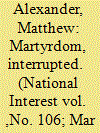

|
|
|
|
|
| Publication |
2010.
|
| Summary/Abstract |
THE SEVEN-year manhunt came down to this. In the wee morning hours of a September dawn, Noordin Mohammed Top, the most wanted terrorist in Southeast Asia, huddled in a burning house in central Java along with three of his men. The fire started when a round shot by police in the initial standoff ignited the fuel tank of a motorcycle inside the courtyard of the house, forcing Top to seek refuge in the bathroom, where he decided to make his final stand. Top believed that dying during what he considered to be legitimate jihad would earn him a seat in heaven, and taking a few apostate policemen with him would ensure a bonus reward in the afterlife. The Indonesian police had come close to catching Top before, but he proved to be an elusive, and lethal, fugitive. Perhaps this would be their moment of glory.
|
|
|
|
|
|
|
|
|
|
|
|
|
|
|
|
| 14 |
ID:
137320
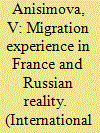

|
|
|
|
|
| Summary/Abstract |
ONCE THE USSR COLLAPSED, the Russian Federation and other former Soviet states had to adapt to the processes of globalization and harsh competition in the international arena. On the one hand, this opened up fresh development opportunities; on the other hand, this inevitably presented fresh challenges and exposed the weaknesses and maladies of the yet immature sociopolitical and economic systems. The previous single economic structure, which made it possible to smooth over the uneven distribution of resources and use them for a harmonious development of all territories of the former Soviet Union, was disrupted in order to indulge the political interests while disregarding the economic links that had taken decades to form. It is this factor coupled with demographic problems that was behind the swelling streams of migrants in the former Soviet Union.
|
|
|
|
|
|
|
|
|
|
|
|
|
|
|
|
| 15 |
ID:
119572
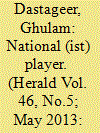

|
|
|
| 16 |
ID:
120324
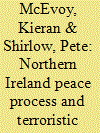

|
|
|
|
|
| Publication |
2013.
|
| Summary/Abstract |
In their article published in this journal, 1 Edwards and McGrattan charge that some of us who have written about the peace process in Northern Ireland "risk complicity in reproducing the terroristic narratives that inspired and perpetuated the conflict" (p. 357). Although the McCarthy-like logic of this argument would not normally warrant a scholarly response-if one studies, writes about, or heaven forbid seeks to understand Republicanism or Loyalism one risks reproducing "terroristic" narratives (whatever these are)-the piece is so riddled with inaccuracies, false dichotomies, and tendentious claims that we have been moved to reply. Moreover the introductory hook to their argument-that the Northern Ireland example of peacemaking is being misinterpreted in terms of countering violent Islamic extremism in Britain-requires that their arguments be critiqued lest they be taken seriously in policy circles.
|
|
|
|
|
|
|
|
|
|
|
|
|
|
|
|
| 17 |
ID:
129866
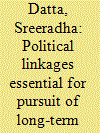

|
|
|
| 18 |
ID:
046302
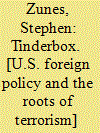

|
|
|
|
|
| Publication |
London, Zed Books, 2003.
|
| Description |
iv, 264p.
|
| Standard Number |
1842772597
|
|
|
|
|
|
|
|
|
|
|
|
Copies: C:1/I:0,R:0,Q:0
Circulation
| Accession# | Call# | Current Location | Status | Policy | Location |
| 046219 | 327.73056/ZUN 046219 | Main | On Shelf | General | |
|
|
|
|
| 19 |
ID:
182865
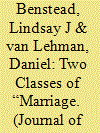

|
|
|
|
|
| Summary/Abstract |
Some Somali majority clan girls and women receive economic and security benefits from marriage to Al-Shabaab fighters. Yet, the literature treats women’s experiences monolithically and misses the role that race plays in determining the circumstances of such unions. The authors argue that one should not refer to the unions of Somali Bantu girls and women with Al-Shabaab fighters as a “marriage” but rather as sexual and domestic slavery – a form of extraction by Al-Shabaab that works to ethnically cleanse the Bantu from their ancestral land. Drawing on data from an original survey conducted in 2017 of 139 Somali Bantu refugee households who fled to Kenya during the previous year, the authors examine the nature and extent of unions between females from different races with Al-Shabaab fighters. Women and girls from majority clans are more likely to marry fighters freely. Compared to majority clan females, Somali Bantu girls are enslaved by Al-Shabaab fighters at younger ages and typically remain with their own families rather than moving to the man’s household, contrary to Somali’s patrilineal marriage customs. Al-Shabaab fighters do not claim the children they have with Somali Bantu girls and women, whom they despise as a racially distinct minority with low social status. This work underscores the need to avoid the term “marriage” when referring to the sexual slavery of minorities in Somalia by Al-Shabaab and for the international community both to investigate claims of ethnic cleansing as well as support the fledgling Somali government in establishing a system of rule of law.
|
|
|
|
|
|
|
|
|
|
|
|
|
|
|
|
| 20 |
ID:
123386
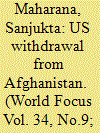

|
|
|
|
|
| Publication |
2013.
|
| Summary/Abstract |
The US had launched war on terror after destruction of world trade centre on 11 September 2001 and attacked on Afghanistan due to suspicion of Taliban's link with this attack. After this attack, the US along with the international security assistance force has taken the charge of establishment of peace and stability in the country. Different countries have been providing their assistance for the reconstruction programme in Afghanistan and establishment of peace, security and stability and are cooperating for eradication of terrorism and Islamic extremism. But the international security assistance force will leave Afghanistan in 2014 and Afghan's National Army will take the responsibility of establishment of peace in the country. In this circumstance, this topic provides an elaborate picture of Indian engagement in Afghanistan after the withdrawal of international forces in 2014.
|
|
|
|
|
|
|
|
|
|
|
|
|
|
|
|
|
|
|
|
|